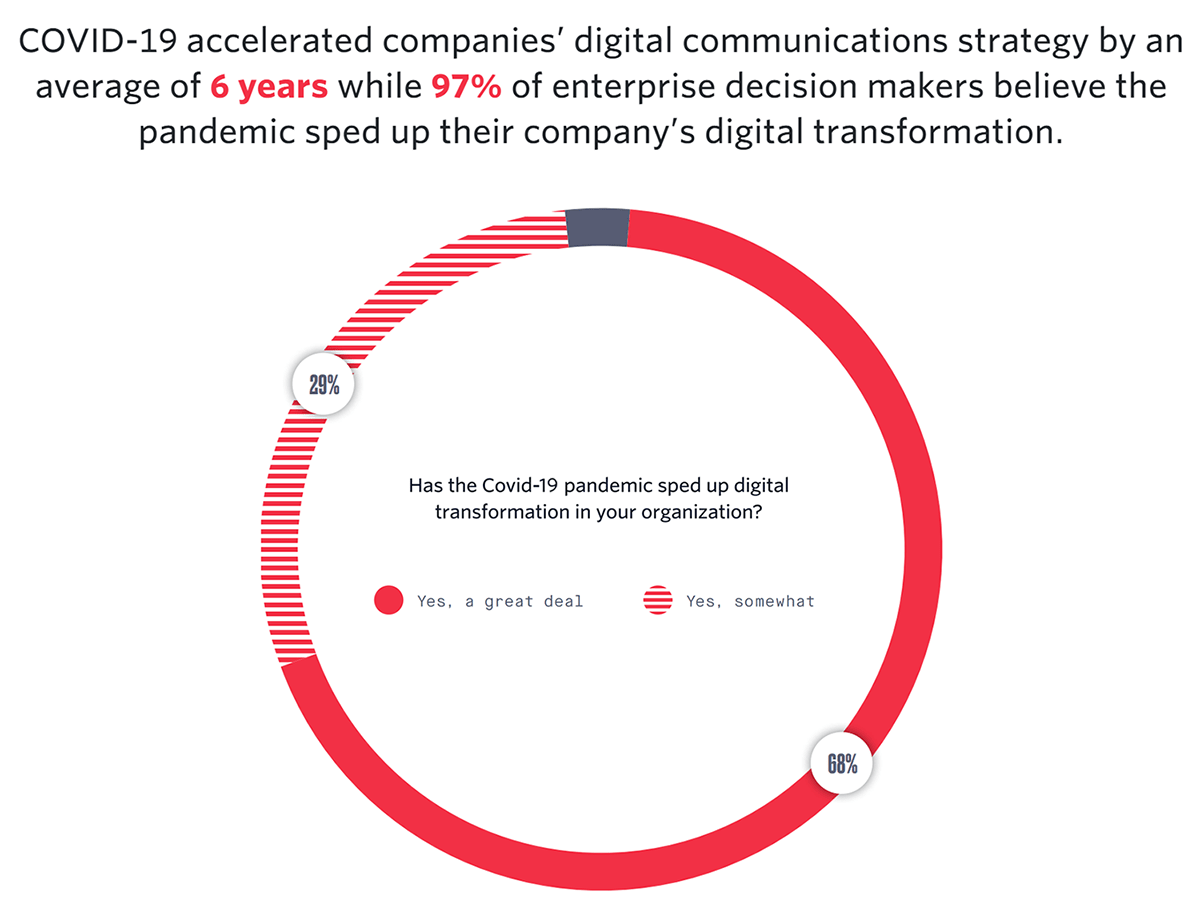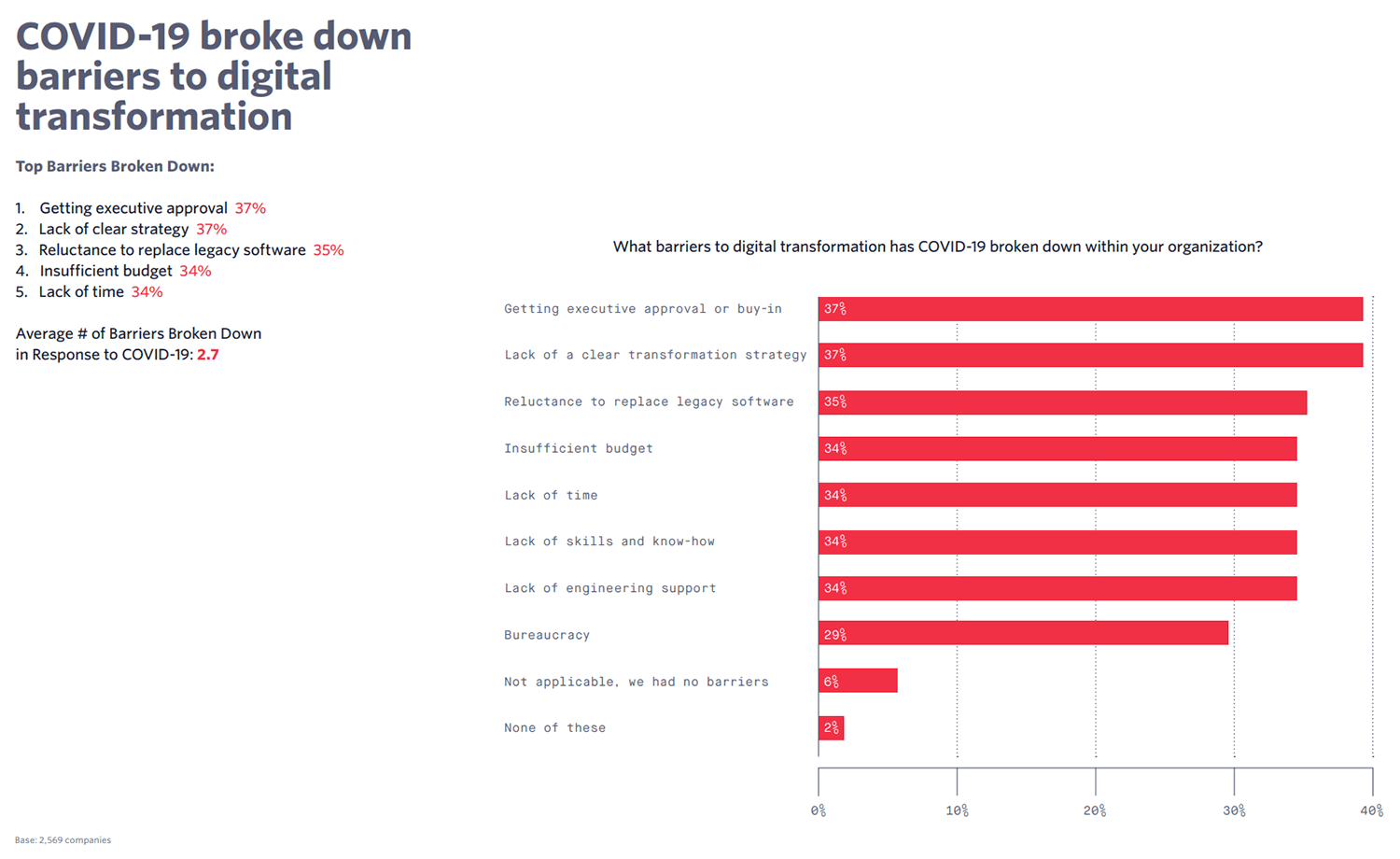Share this Post
The coronavirus pandemic has jumpstarted digitalisation efforts at companies the world over. Within the blink of an eye, organisations have had to facilitate new ways of maintaining operations while employees work from home, introducing a slew of challenges for operating complex systems, executing key processes, effectively communicating with teammates, and reporting accurately with data spread across multiple locations.
As McKinsey puts it in its recent Digital Strategy in a Time of Crisis report, businesses that once mapped their digitalisation strategies in one- to three-year phases have had to scale their initiatives in a matter of weeks. However, while challenging, many organisations and their employees are experiencing for the first time the advantages that fully digitised processes can have in everyday working life and operations. Through leveraging sophisticated digital tools such as enterprise resource planning (ERP) systems like metasfresh, companies are automating key processes, managing complex systems and supply chains, improving collaboration and communication across the workforce, and gaining real-time visibility into their operations — and all while working remotely.
As such, after accelerating digital transformation and investing in a digital workforce, plans to take a step backwards and revert to the “old normal” post crisis are very few and far between. Instead, as McKinsey notes, COVID-19 is giving us a glimpse into a future world where digital becomes central to every interaction with customers, business partners and employees, and where automated processes become the primary driver of productivity — and the basis of flexible, transparent and stable supply chains.
The Digital Turning Point
To understand how businesses are adapting to the new reality, Twilio recently conducted a survey fielding questions to more than 2,500 enterprise decision-makers from around the world about how the pandemic has affected their digitisation strategies and digital engagement. The results reveal that 97% of decision-makers believe that the pandemic sped up their company’s digital transformation — with more than two-thirds (68%) reporting that it accelerated by “a great deal”.

COVID-19 was the digital accelerant of the decade —Source: twilio.com
While there were many perceived barriers to digital transformation pre-pandemic, businesses have found ways to overcome them throughout the crisis.
79% of Twilio’s survey respondents said that COVID-19 has led to an increase in budgets for digital transformation. Companies also report overcoming hurdles such as a lack of clear strategy (37%), getting executive approval (37%), reluctance to replace legacy software (35%), and lack of time (35%).

Barriers to digital transformation broken down —Source: twilio.com
Remote work has also become widespread, with nearly all respondents (99%) agreeing that the technologies their teams are using now will create opportunities to continue remote work in the future.
The coronavirus indeed represents a digital turning point in many organizations’ ongoing histories. The digital and cloud-based tools, technologies and processes being put in place now to weather the storm will still be there in the post-crisis world.
For example, many companies that had legacy ERP applications when the crisis struck struggled to get employees onsite to manage their systems due to quarantine restrictions — and this has hastened a migration to next-generation cloud-based ERP systems like metasfresh, which can be accessed by anyone on any device from anywhere.
The limitations of traditional ERP systems are of course very well known. Containing a vast number of disparate applications with limited integration and interoperability, real-time business insights are extremely difficult to tease out of legacy ERP data — and integrating new applications with these systems is enormously complex. Yet, despite these shortcomings, many organisations were still reluctant to upgrade.
The new business challenges presented by COVID-19, however, have ushered in a speedier adoption of next-generation ERP systems. Companies need real-time visibility to better manage supply chains and improve supply and demand forecasting now more than ever. They also need advanced digital collaboration tools to facilitate remote working practices across every department — from finance to procurement to HR — and to collaborate digitally with trading partners.
Next-generation, cloud-based ERP systems help companies address all these business challenges and more besides. They give organisations real-time visibility into sales, inventory, production, financials and all business resources — and with powerful, data-driven analytics, better, more informed and more agile decisions can be made to meet business objectives.
And while efforts to digitise need to be made quickly, McKinsey research shows that bold moves to adopt digital technologies at scale have historically proven to correlate with high value creation.
As McKinsey puts it: “As the COVID-19 crisis forces your customers, employees, and supply chains into digital channels and new ways of working, now is the time to ask yourself: What are the bold digital actions we’ve hesitated to pursue in the past, even as we’ve known they would eventually be required? Strange as it may seem, right now, in a moment of crisis, is precisely the time to boldly advance your digital agenda.”

A crisis demands boldness and learning —Source: mckinsey.com
Final Thoughts
For many businesses, the pandemic has accelerated the pace of change. Organisations have had to figure out new ways to reach their customers, connect with trading partners, enable employee productivity and ensure business continuity pretty much overnight. But the digitisation strategies employed must extend after coronavirus — for businesses will find themselves competing in a new, digitally transformed and enabled business world.
The technology solutions an organisation invests in now will determine how well it’s positioned when the dust settles and the new digital normal is revealed — and a modern, powerful ERP system like metasfresh Cloud gives organisations the opportunity to not only survive the current pandemic, but thrive in the brave new world beyond.
metasfresh keeps constant track of everything that’s going on within the company, facilitates instant communication between employees, customers, suppliers, business partners and other stakeholders, and connects all of the organisation’s departments — finance, accounting, procurement, inventory, distribution, HR, sales, marketing — together, allowing them to work from the same, dependable information. More than this, the next-generation open source metasfresh Cloud is a wholly agile business solution, providing the flexible foundation upon which organisations can integrate more and more cutting-edge technologies to advance their digital maturity, drive transformation, and keep scaling, growing, competing and maintaining profitable business relationships – both now and after the pandemic.
Talk to us here at metasfresh. Since 2006 we have been developing our ERP software non-stop with open source components and under the open source licenses GPLv2 and GPLv3. Our mission is to enable each and every company to access a powerful ERP system that supports digital transformation and fuels corporate growth. Get in touch today for more information and insights.
Share this Post



